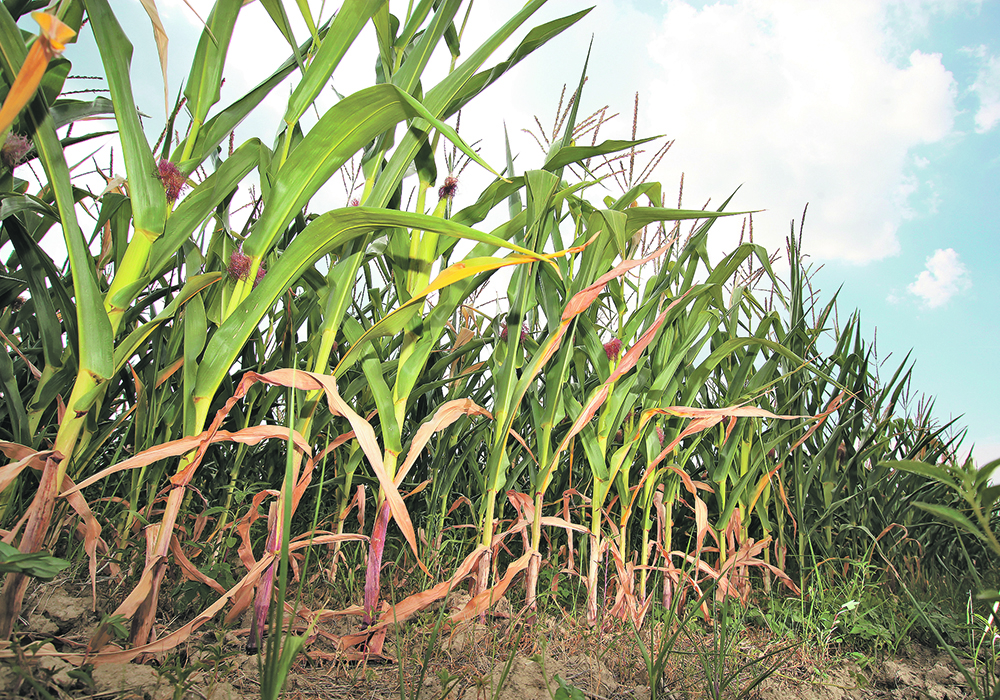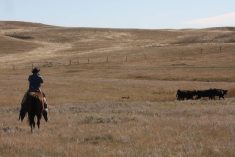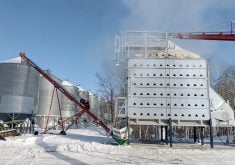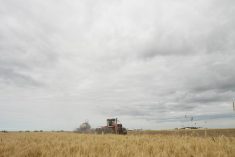Discovery of co-operative traits could be used in modern breeding programs to provide efficient ways to increase yields
Plants compete. They grow tall and spread their leaves to reach sunlight and outshine other plants. Roots will spread deeper and wider in search of water and nutrients, entangling themselves with neighbours’ roots.
But a recent experiment by researchers at the University of Zurich and Agroscope, Switzerland’s centre of excellence for agricultural research and affiliated with the Federal Office for Agriculture, found that if plants co-operated, they could increase crop productivity.
The challenge lay in discovering the alleles that could promote co-operation, and the researchers developed a system to find them.
Read Also
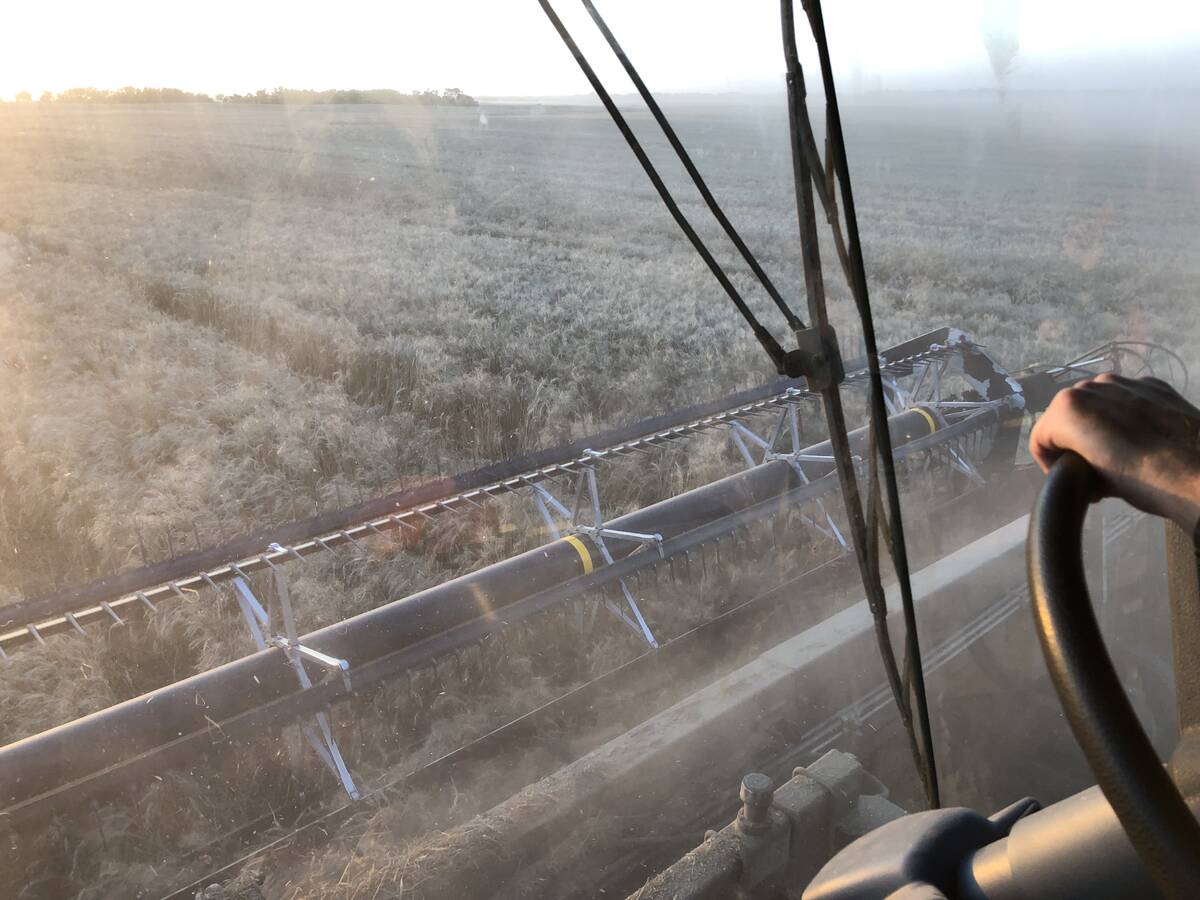
Mail strike disrupts grain sample delivery
The Canadian Grain Commission has asked farmers to consider delivering harvest samples directly to CGC offices, services centres or approved drop offs as Canada Post strike delays mail.
“I was very interested in a ‘group property’ termed positive biodiversity/mixture effects where combining plants that are different into a community improves the performance of the community as a whole,” said Samuel Wuest with Agroscope.
“This is what we call ‘complementarity’. Plants are specialized to do different things, but by combining these specialists they can, for instance, partition resources among each other so that both profits. We studied the phenomenon at the genetic level and found that this group-level property could have a simple genetic architecture.”
Wuest said that past research has shown that the group property approach is already being exploited in crop breeding and it can make a big difference in averting famines and food scarcity disasters. But it can be slow and cumbersome. His objective was to achieve a more targeted approach and improve on co-operative traits. But there were challenges.
“How do we even recognize co-operative traits in plants?” he said. “How do we find co-operative alleles without knowing what a co-operative plant looks like in terms of morphology or foraging behaviour? There are multiple definitions of co-operation but the one that I prefer is ‘a costly behaviour that confers fitness benefits on same-species recipients’ or, in simple terms, a behaviour that brings a disadvantage to the individual but benefits the group.”
That group benefit arises from more efficient resource use when converting energy and nutrients into seeds, such as saved carbon costs when growing tall to outcompete others and saved structural and respiratory costs of roots arising from escalated competition when plants grow close to each other.
He said that competitive interactions among plants have several components. One is size. Bigger plants use more resources and affect their neighbours more than smaller plants.
So bigger plants, even though they may be co-operative, may still have a relatively large effect on their neighbours simply because they are bigger. Therefore, after adjusting for size, a co-operative genotype would do better when grown in a monoculture than what might be expected from its performance when grown in mixtures of other, unrelated genotypes.
A second challenge is that co-operative traits and alleles are expected to be rare because they are typically a disadvantage to the plant and usually evolutionarily unstable.
“Normally one does not expect to find co-operative alleles in plants, except when, for example, such alleles have other advantages unrelated to co-operation.”
One such advantage is where co-operation is associated with disease resistance.
The researchers used the model plant arabidopsis to compare the performance of a given plant when grown with a genetically similar individual plant (similar to monoculture) to its performance when grown with other genotypes. By measuring the above-ground biomass of each plant and differences in growth, they could see which plants were able to maximize the ability to grow rapidly as well as co-operate with genetically similar individuals to the benefit of their neighbours.
Researchers used published genome-wide data to find the genes associated with the co-operative trait. They found it was most strongly associated with a small group of linked polymorphisms (common variants in a sequence of DNA) and in particular a minor allele at one gene. When plants carrying that minor gene were grown close together, they produced 15 percent more biomass than plants carrying the major allele at the same locus. That co-operative effect also showed as reduced root competition with plants spending less energy invading their neighbour’s root zones for nutrients.
“We focused on establishing and testing the method and are happy to have a proof-of-principle in the species,” he said. “It gave us the confidence to run a similar experiment in soybean where we see the most potential. Soybean is a major and globally important crop but exhibits relatively few co-operative traits and little density adaptation compared to maize, wheat and rice.”
He said that they try to directly find co-operative traits and genes rather than relying on genetic variation to be present in their breeding population and then selecting for higher yields.
“Breeding for higher yields often increases co-operation and this is very nicely visible in maize,” he said. “Modern maize can be grown at amazingly high densities because varieties have very upright leaf angles, compact and deep roots that reduce neighbour interference, and small tassels (reduced male-male competition) and therefore saved costs that can be invested into seeds. These are co-operative traits. They have typically been selected inadvertently, simply by selecting for high monoculture yields.”
Yield progress, he said, is only apparent at increasing densities where plant-plant interactions are intense. It shows that maize breeders have improved groups rather than individuals. He said that if they had improved individuals, yield progress would be apparent at any density, which it is not.
“Instead, modern maize is simply better adapted to grow at high densities where environmental resources can be optimally used by many more plants squeezed into a small space. For this, we had to reduce competitive interference among plants.”
Going forward, the research team is running a similar experiment in soybeans, comparing traditional landraces and modern elite varieties.
“I am strongly convinced that soybean offers much potential to improve the collective performance,” Wuest said.
The comparative strategy used in the team’s experiment could be used for discovering co-operative alleles for any measurable characteristic, which might then be leveraged in modern breeding programs to provide efficient ways to increase yields.
The research was published in the journal PLOS Biology.



